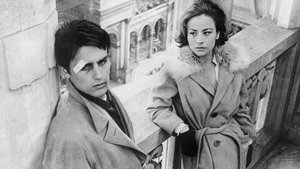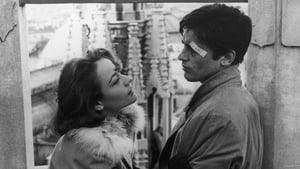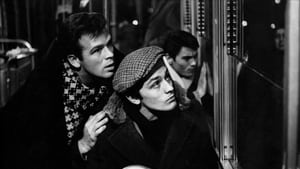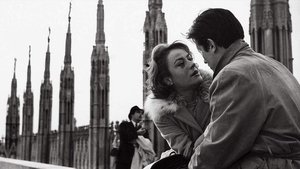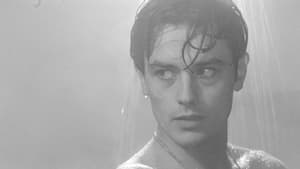Video Sources 0 Views
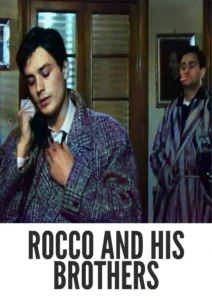
Synopsis

Step into the gritty world of Luchino Visconti’s masterpiece, Rocco and His Brothers, a powerful family drama from 1960, now beautifully colorized for a profoundly moving viewing experience. This film, directed by the visionary Luchino Visconti, delivers a raw and unflinching portrayal of a Southern Italian family’s disintegration in the industrialized North. Perfect for cinephiles and those seeking a profound and emotionally resonant film, this HD download brings a landmark of Italian cinema to your screen. Explore themes of family, sacrifice, and the corrosive effects of poverty in this unforgettable film. Other titles include: Rocco e i suoi fratelli, Rocco and His Brothers.
Rocco and His Brothers tells the story of the Parondi family, who migrate from rural Lucania in Southern Italy to the bustling industrial city of Milan in search of a better life. The family matriarch, Rosaria, and her five sons—Vincenzo, Simone, Rocco, Ciro, and Luca—struggle to adapt to their new environment, facing poverty, prejudice, and the temptations of urban life.
As the brothers navigate their individual paths, their bonds are tested and strained. Simone, driven by ambition and desire, becomes entangled with Nadia, a prostitute, leading him down a path of violence and self-destruction. Rocco, the compassionate and selfless brother, attempts to protect his family and maintain their unity, even at great personal cost. Ciro seeks stability through education and hard work, while Vincenzo strives for a traditional family life. Young Luca observes the unfolding drama, representing the next generation and the uncertain future. The film culminates in tragedy, highlighting the destructive forces that tear the family apart. Rocco and His Brothers is a poignant and powerful exploration of the human condition.
The film features a stellar cast of actors who bring this emotionally charged story to life:
-
Alain Delon as Rocco Parondi
-
Renato Salvatori as Simone Parondi
-
Annie Girardot as Nadia
-
Katina Paxinou as Rosaria Parondi
-
Claudia Cardinale as Ginetta
-
Max Cartier as Ciro Parondi
-
Rocco Vidolazzi as Luca Parondi
-
Spiros Focás as Vincenzo Parondi
Rocco and His Brothers transcends simple categorization, blending elements of family drama, melodrama, and neorealism. Its gritty realism, complex characters, and emotionally charged narrative make it a compelling and unforgettable cinematic experience.
Released in 1960, Rocco and His Brothers reflects the social and economic changes occurring in postwar Italy. The film critiques the rapid industrialization and urbanization that led to mass migration from the rural South to the industrialized North. Visconti uses the Parondi family’s story to explore themes of poverty, alienation, and the disintegration of traditional values. Rocco and His Brothers is a powerful example of Italian neorealism, a cinematic movement that sought to depict the lives of ordinary people and address pressing social issues. The film also draws inspiration from Thomas Mann’s novel Joseph and His Brothers and the works of Italian poet Rocco Scotellaro, further enriching its thematic depth.
This colorized version of Rocco and His Brothers has been meticulously restored using modern digital techniques, enhancing the visual impact while preserving the film’s original atmosphere of realism and emotional intensity. The colorization process involved carefully analyzing the grayscale tones of the original black and white footage and assigning appropriate colors to each scene. Advanced algorithms were used for color palette selection and image enhancement. This painstaking process brings new life to the characters and settings, making the story even more accessible to modern audiences. While some may debate the merits of colorizing classic films, it introduces these films to a broader audience, ensuring their legacy for future generations.
-
: Luchino Visconti
-
: Luchino Visconti, Suso Cecchi D’Amico, Vasco Pratolini, Pasquale Festa Campanile, Massimo Franciosa, Enrico Medioli
-
Based on: Stories by Giovanni Testori and the novel “Joseph and His Brothers” by Thomas Mann
-
Cinematography: Giuseppe Rotunno
-
Edited by: Mario Serandrei
-
Production Company: Titanus, Les Films Marceau, Vides Cinematografica
-
Distributed by: Titanus
-
Runtime: 180 minutes (original Italian version), 161 minutes (international version)
Technical Specifications
-
Download Format: MP4
-
Resolution: HD (1080p)
-
Compatibility: Compatible with most devices, including smartphones, tablets, computers, and smart TVs.
Reviews and Critical Reception
Rocco and His Brothers (1960) is widely regarded as a masterpiece of Italian cinema and one of Luchino Visconti’s most important works. The film has been praised for its powerful performances, stunning cinematography, and unflinching portrayal of social issues. It won the Special Jury Prize at the Venice Film Festival in 1960 and has since been recognized as a landmark of neorealism. Critics have noted the film’s profound exploration of family dynamics, the corrosive effects of poverty, and the clash between traditional values and modern society. Rocco and His Brothers remains a relevant and influential film, continuing to resonate with audiences around the world.
FAQs
-
Q: What is Rocco and His Brothers about?
-
A: Rocco and His Brothers tells the story of the Parondi family, who migrate from Southern Italy to Milan in search of a better life, only to face poverty, prejudice, and disintegration.
-
-
Q: Is Rocco and His Brothers (1960) a well-known Visconti film?
-
A: Yes, Rocco and His Brothers is considered one of Luchino Visconti’s most important and critically acclaimed works.
-
-
Q: Is this version of Rocco and His Brothers colorized?
-
A: Yes, this version has been professionally colorized to enhance the viewing experience.
-
-
Q: What makes Rocco and His Brothers interesting for cinema fans?
-
A: Rocco and His Brothers offers a powerful and unflinching portrayal of social issues, family dynamics, and the human condition.
-
-
Q: What is the download format?
-
A: The download format is MP4, which is compatible with most devices.
-
-
Q: What resolution is the download?
-
A: The resolution is HD (1080p), providing a high-quality viewing experience.
-
Download Now in HD!
Watch Rocco and His Brothers Today! Experience the emotional power and cinematic brilliance of this unforgettable film.
